Genetics final exam
1/329
There's no tags or description
Looks like no tags are added yet.
Name | Mastery | Learn | Test | Matching | Spaced |
|---|
No study sessions yet.
330 Terms
genetics
science of heredity and variation
transmission, population, and molecular
3 subdivision of genetics
alleles
alternate forms of a gene
heterozygous
two different alleles
homozygous
two of the same alleles
phenotype
what they look like
genotype
what alleles they carry
Mendel’s principle of segregation
traits are controlled by pairs of factors, which segregate from each other when the gametes are formed. One alleles is passed from paternal and one from the maternal
dihybrid cross
a cross between F1 offsprings, involving two traits
monohybrid cross
a cross involving one trait
Mendel’s principle of independent assortment
genes for 2 different traits segregate independently when the gametes are formed
Law of dominance
some alleles are dominant, others recessive. One dominant allele will display the effect of the dominant allele
Law of segregation
each gene is present in two alleles, which segregate when the gametes are formed - each offspring inherits one parental and one maternal copy
Law of independent assortment
different genes segregate independently when the gametes are formed
What is the common ratio of a dihybrid cross
9:3:3:1
disease
defects in enzymes results in
Alkaptonuria
inborn errors of metabolism (Archibald Garrod)
mutant genes
Defective enzymes are caused by
George Beadle and Edward Tatum proposed this
one gene one enzyme hypothesis (later changed to one gene one polypeptide)
many traits (and heredity diseases) are
complex (not caused by a single gene)
risk factor
each genetic factor that increases chance of showing trait
haploid
1N

diploid
2N
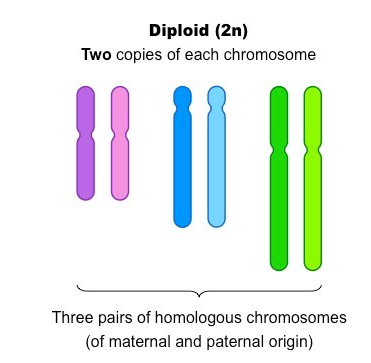
Meiosis
How are chromosomes transmitted to somatic cells
Meiosis 1: Early prophase 1
chromatin begins to condense following interface
Meiosis 1: Mid prophase 1
synapsis aligns homologous pairs and chromosomes condense further
Meiosis 1: Late prophase / prometaphase
chromosomes continue to coil and shorten. nuclear envelope breaks down.
chiasma
site of crossing over
crossing over causes
genetic variation
metaphase 1
homologous pairs line up one the metaphase (equatorial) plate
anaphase 1
homologous chromosomes (each with two chromatids) move to opposite poles of cell
telophase 1
the chromosomes gather into nuclei and original cell divides
Meiosis 2: prophase 2
chromosomes condense again, following a brief interphase (interkinesis) in which DNA does not replicate
Meiosis 2: metaphase 2
centrosomes of the paired chromatids line up at the equatorial plates of each cell
Meiosis 2: telophase 2
chromosomes gather into nuclei and the cell divides
Products after Meiosis 2
4 cells has nucleus with a haploid # of chromosome
independent assortment
chromosomes line up randomly (possble arrangements 2^(# of chromosomes - 1))
how many chromosomes do humans have
23 pairs, 46 total
meiosis generates genetic variation by
crossing over and independent assortment
cohesin
in mitosis and meiosis, holds together sister chromatids until anaphase
shugoshin
a protein that protects cohesin from degradation during meiosis. “guardian spirit”
Prokaryotic chromosomes
circular, in cytoplasm, single chromosome, no histones, DNA alone
Eukaryotic chromosomes
linear, in nucleus, multiple chromosomes, contains histone proteins, occurs as chromatin
Chromatin is made up of
DNA and histone proteins
analyze chromosomes by
size, banding pattern, centromere position
karyotype
complete set of chromosomes in a cell (used for determining evolutionary relationship btw species)
homologous pair of chromosomes
same genes in same location, alleles can be same or different, and same centromere positions
autosomes
pair of complete karyotupes (one from each parent)
Sutton and Bover
linked chromosomes to medelian inheritance
sex linked characteristics
genes on x chromosomes are x linked, genes on y chromosomes are y linked
chromosomes theory of inheritence
genes are located on chromosomes
Thomas Hunt Morgan
explained sex linked characteristics through fruit flies.
non disjuction
failure of chromosomes/chromatids to separate during meiosis (can result in down syndrome)
aneuploidy
an increase or decrease in the # of individual chromosomes
monosomy
only one sex chromosome (ex: turner syndrome)
trisomy
an extra chromosome in a set (ex: edward’s syndrome)
causes of aneuploidy
mitotic spindle function problems (loss of centromere, gain of centrosomes, or checkpoint failures)
Trisomy 21
Down Syndrome:; extra chromosome in set 21
polyploidy
presence of more than two complete sets of chromosomes
autopolyploidy
polyploids created by chromosome duplication with a species
allopolyploidy
polyploids created by hybridization btw two species
example of autopolyploidy plant
potato , banana, sweet potato
example of allopolyploidy
tobacco, wheat, strawberrycreated from hybridization of different species like oats and cultivated wheat.
importance of polyploidy
increase in cell size, larger plant attributes, and evolution (rise to new species)
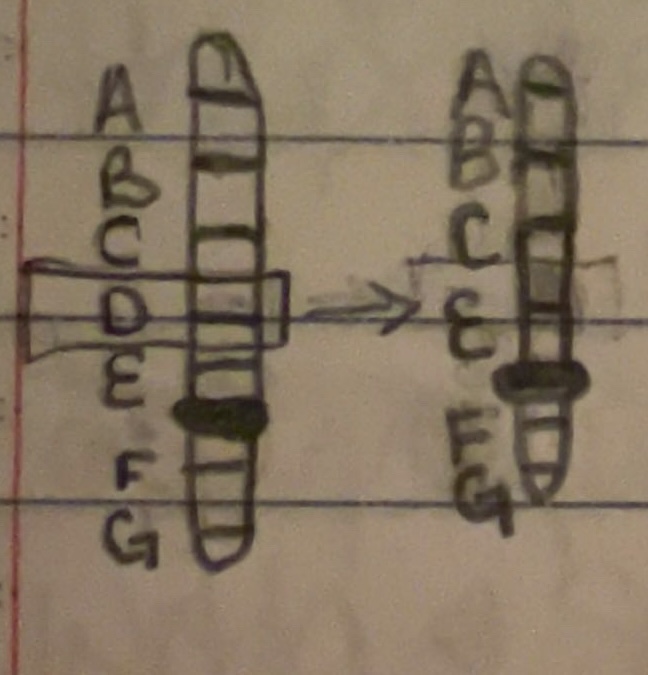
structural change to chromosomes
deletion

structural change to chromosomes
duplication
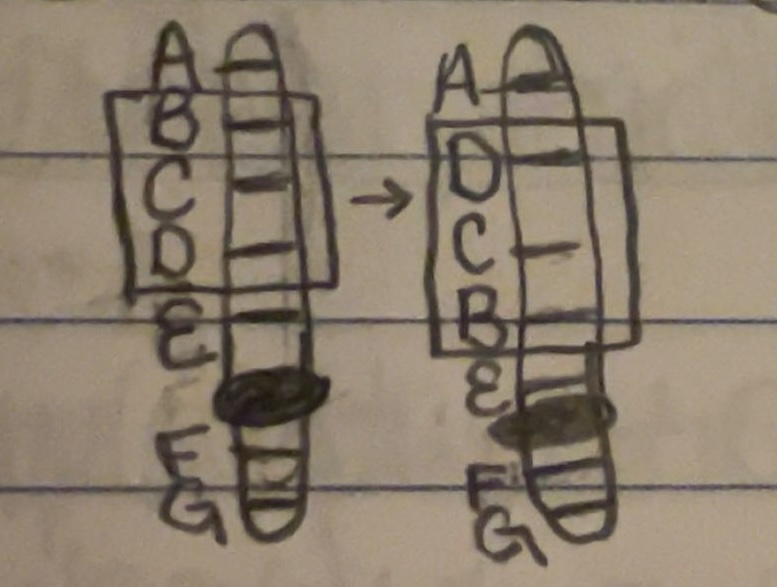
structural change to chromosomes
inversion
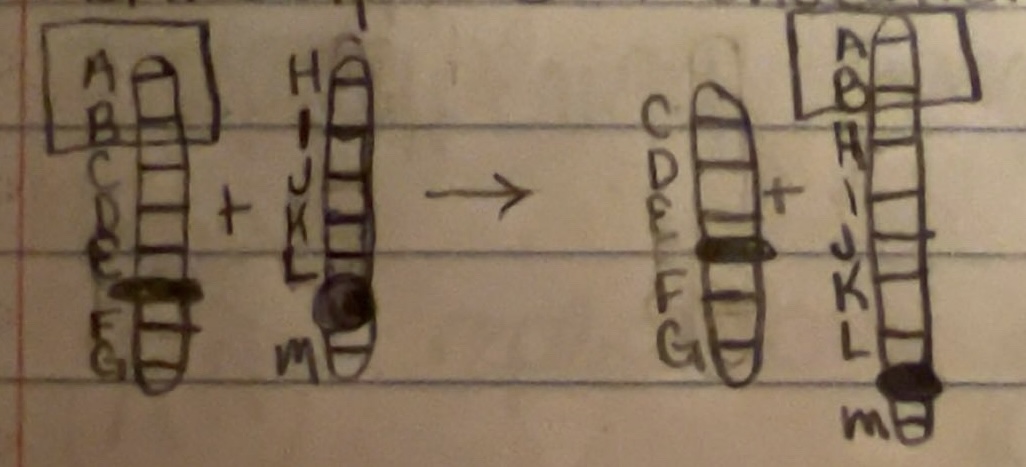
structural change to chromosomes
nonreciprocal translation
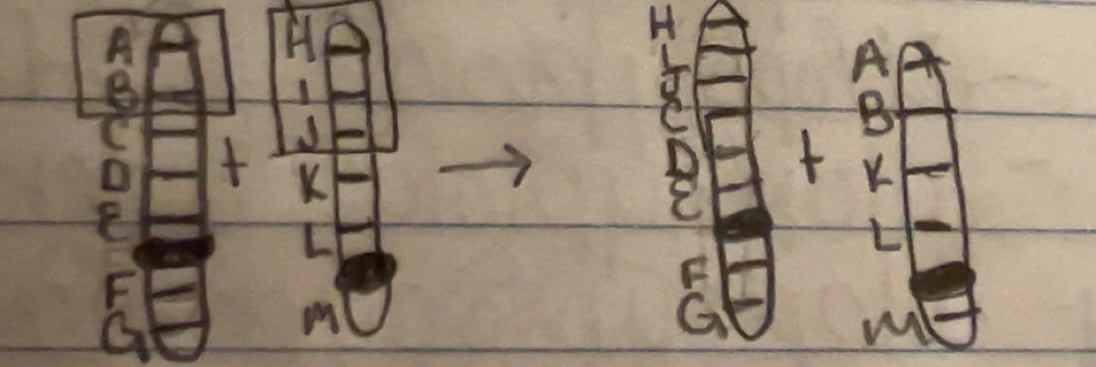
structural change to chromosomes
reciprocal translocation
structural change to chromosomes are important because they can
cause gene loss and increase # of copies of a gene
fragile sites
constrictions or gaps in chromosomes that are prone to breakage under certain conditions
copy # variation (CNVs)
differences in the # of copies of particular DNA sequences
reproduction
zygote (diploid) → meiosis (produces gametes: sperm or eggs) → gametes (haploid) → fertilization (produces zygote)
males (biological sex)
small gametes
females (biological sex)
large gametes
variation in human sex genotypes: XO
female, shorter, underdeveloped sex organs, broad chest, and neck folds
variation in human sex genotypes: XXY
male, taller, underdeveloped testes, reduced facial and pubic hair
variation in human sex genotypes: XYY
male, taller
variation in human sex genotypes:XXX
female
SRY encodes a protein called
testis determining factor; master switch to start male development
dosage compensation
equalize the x chromosome expression in males and females (2x in males, ½ for females)
x chromosome inactivation
barr body is condensed and inactivates x chromosome randomly (causes infertile females)
in cats x-activation causes
calico coat color
autosomal recessive traits
skips generations, appears in males and females, affected has to receive allele from both parents
autosomal dominant traits
in every generation, in males and females, affected individuals must have at least one affect parent
x linked recessive
skips parents, more frequent in males (inherited from mother), all affected males will pass to daughter
x linked dominant
every generation, more frequent in females, and all daughters of affected men will be affected
y linked
every generation, only males
genetic counseling
using pedigrees to calculate risk of inheriting traits
one trait can be affected by
more than one gene
epistasis
alleles for one gene masks or suppresses the effect of another gene
recessive epistasis
a form of epistasis where a recessive allele at one locus masks the effects of alleles at another locus.
dominant epistasis
a form of epistasis where a dominant allele at one locus masks the effects of alleles at another locus.
complementary gene interaction
one dominant allele at each gene locus to display wild type phenotypes
complementation tests
can be used to determine if two mutations are caused by alleles of the same gene
mutation
where new genes come from
incomplete dominance
neither trait is dominant, observed when phenotype is quantitative rather than discrete
co-dominance
both alleles expressed simultaneously
complete dominance
shows dominant allele only
lethel alleles
Tay Sachs disease (TT and Tt - normal, Tt - tay Sachs (lethal))